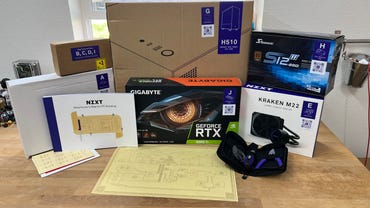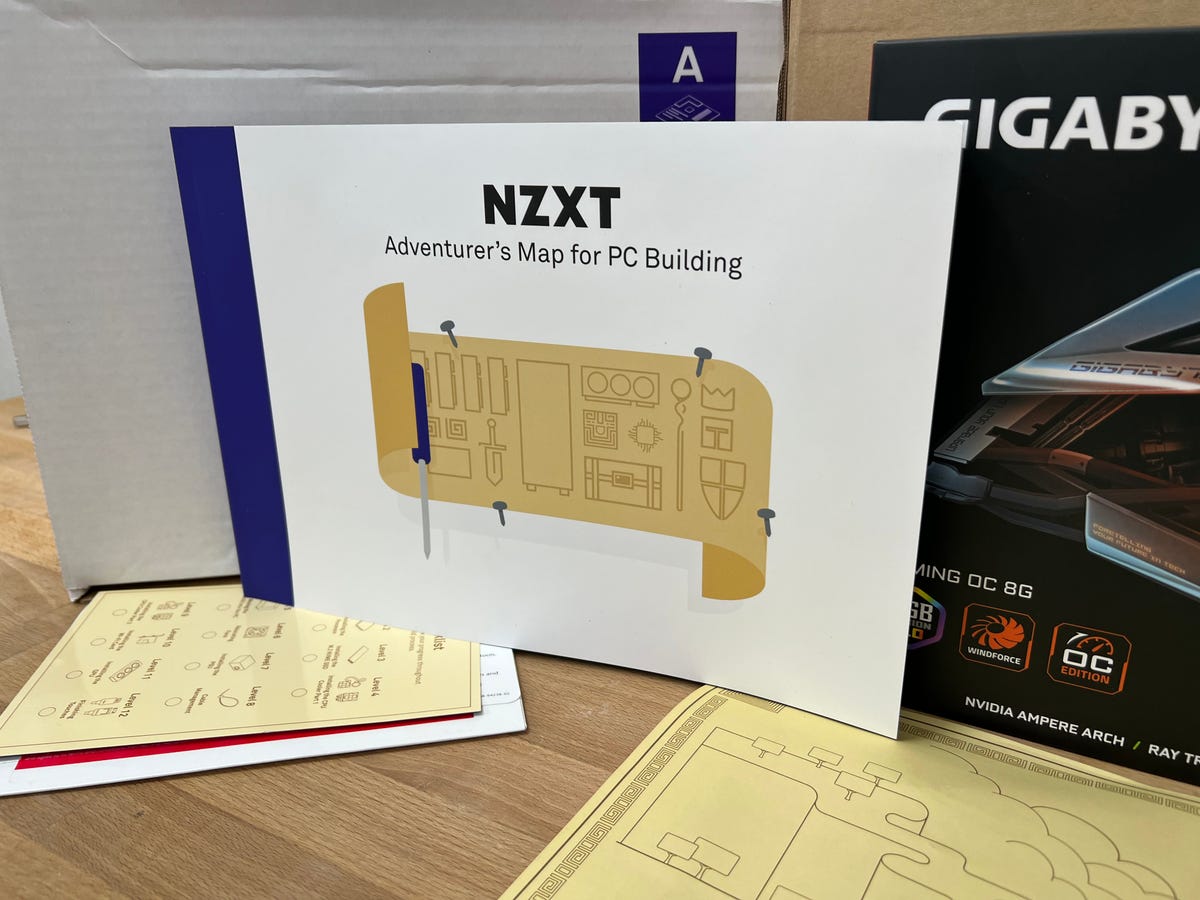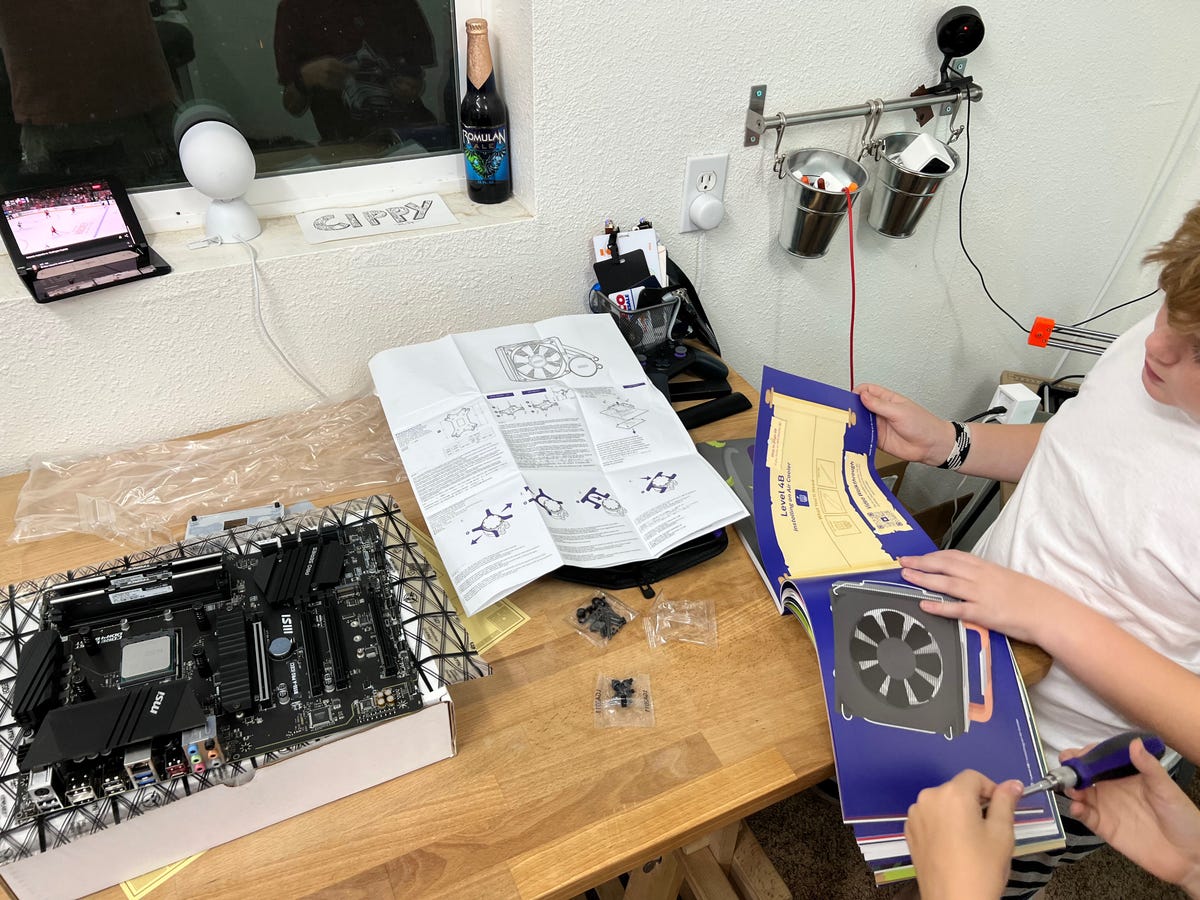![]()
Jason Cipriani
| November 16, 2021
| Topic: Computers & Tech
I built my first gaming PC about two years ago, right before COVID-19 and the subsequent supply chain issues it has caused. I spent about a month doing my research, handpicking part after part and component that would go inside it. I also watched far too many hours of YouTube videos, detailing how to put a PC together from scratch.
I knew nothing about putting a PC together, let alone one that I had invested nearly $2,000 into. But, after a few trials and tribulations — and many, many swear words — I succeeded.
Also: How to build a gaming PC for under $600
Since then, my two boys have been asking (okay, begging) me to let them build a gaming PC. I kept telling them we would undertake the project when GPUs are easier to find, or at the very least more affordable.

9.0
NZXT BLD Kit
Outstanding
$1399 at NZXT
Like
Prevents endless shopping for partsIncludes a tool kitInstruction manual and videos to walk you through the process
Don’t Like
Wish the process included some education about the BIOS
About a month ago, NZXT reached out to me to let me know they were about to launch a new product called
NZXT BLD Kit
. Instead of selling a custom NZXT BLD gaming PC, NZXT would sell you a kit, complete with the tools and components you need to put together a gaming PC on your own. The Kit even includes all of the instructions, walking you through each step in a handy book, and if you needed a more visual demonstration, there are videos as well.
It’s time to build

NZXT’s BLD guide.
Jason Cipriani/ZDNet
Once the rather large box with all the parts and pieces arrived, we started unpacking it and setting it all out on our workstation. We set aside the included tool kit and instruction book. Each box was labeled with a letter. For boxes with multiple items in them, each bag inside that box had a label with a corresponding QR code you can scan with your phone to get more information about it.
The instruction book, or as NZXT calls it, the Adventurer’s Map for PC Building, uses those same letters and QR codes to guide you along the build.
I won’t bore you by going through each step of the book, but I will say this: The book isn’t laid out like an IKEA instruction pamphlet. It’s more of an interactive book that adds a cartoonish feel to the experience, thoroughly explaining each step along the way, complete with images that give you the general idea of the task at hand.
Also: Cheap, but good: How to build a budget PC for $400 or less
It’s designed to make you feel like you’re going through an ancient temple, exploring and discovering new artifacts along the way. It’s a bit cheesy at times, but it’s also very welcoming and approachable for first-time builders.
My kids, aged 10 and 11, both liked the general theme of the book. It kept them intrigued and entertained, all while learning which parts go where, and what they do.
The build starts with the motherboard, installing the memory, CPU and SSD (that comes with Windows 10 preinstalled on it) and then moves on to installing different components inside the PC case, like the CPU cooler, PSU and where to run all of the wires for a clean-looking build.
There were only a few times that we had to reference the YouTube video for a section — once when insetting the CPU cooling fan to ensure we had it rotated properly, and a couple of other times just to double-check that they had installed a component correctly. Other than that, the instructions in the book were thorough enough for us to follow them without any extra questions.
A few areas that could be improved

Looking over instructions during a NZXT BLD.
Jason Cipriani/ZDNet
Having built a few gaming PCs myself, I appreciate the approach that NZXT took with simplifying the process of the build. More specifically, by preinstalling Windows 10 on the SSD that comes with each kit. However, part of the excitement of building a computer is turning it on for the first time and seeing the BIOS screen show up, letting you know you did everything right. The next step, then, is installing Windows 10 yourself.
Hardware